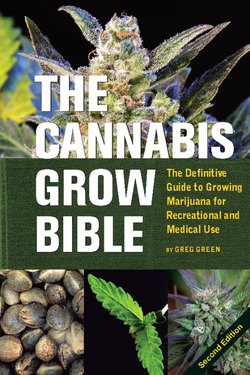Читать книгу The Cannabis Grow Bible - Greg Green - Страница 76
На сайте Литреса книга снята с продажи.
Cannabis Seeds
ОглавлениеCannabaceae is part of the Angiosperm Phylogeny Group.4 Cannabis seeds are created by the angiosperm mechanism. Seeds are small embryonic plants sheltered by a casing, called the seed coat, and are commonly found containing nutrients for food in store. A seed is a product of the fertilization of a plant, specifically the female flower gymnosperms’ and angiosperms’ ripe ovules. A fully formed seed is the completed process of a plant’s reproduction. The formation of the seed, from zygote to embryo, and the seed coat completes the process of reproduction in the plant. It cannot occur without the development of flowers and pollen and the mechanisms of pollination.
This is a good example of a seed that while germinating and pushing the cotyledons to the surface still has the shell attached.
The first part of the process involves the angiosperms, which are fertilized twice with the union of the egg and sperm nuclei into a zygote. The polar nuclei unite with the second sperm cell nucleus, creating a primary endosperm. This endosperm divides into endosperm tissue, which becomes a source of nutrition. The source terminates shortly after the root and stem form. Gymnosperms have two sperm cells relocated from the pollen. Only one sperm fertilizes the egg. The seed is made up of the embryo and some tissue from the parent plant, which forms a covering around the seed. Seeds are formed in plant structures called fruits.
Another, more basic, definition of a seed is that it is a biological organism that is sown. However, seeds are not the only form of plant propagation. Ferns, for example, reproduce spores and an intermediate plant stage called a gametophyte.5 Seeds are the main reason why plants can successfully take over as much land as is available for sowing.
